Ian Crawford tests the 2021 Kia Sorento large SUV with pricing, specs, ride and handling, safety, verdict and everything the over-50 driver needs to know.
Summary: Crawf put his daughter into a Kia Sorento Platinum diesel. That’s high praise indeed, so when he calls the new model “a quantum leap” from his daughter’s, the new Sorento must be worthy of serious consideration.
2021 Kia Sorento Sport+ Diesel
Pricing: $56,850 (plus on road costs, or $59,690 driveaway). S Petrol FWD from $46,850 (plus on road costs, $49,290 driveaway), rising to $67,290 for the GT-Line Diesel 4WD (driveaway). (a fair jump over the previous model, but lots more kit) Prestige paint: $695.
Warranty: Seven-years, unlimited km (still a big selling point)
Safety: 5-star ANCAP (tested 2020)
Engine: 2.2-litre diesel four-cylinder
Power: 148kW at 3800rpm
Torque: 440Nm at 1750-2750
Transmission: eight-speed dual clutch automatic
Drive: all-wheel drive
Body: 4810mm (long); 1900mm (wide); 1700mm (high)
Ground clearance: 176mm (unladen)
Cargo area: 187 litres (7 seats up) to 2011 litres (2 seats up)
Weight: 2610kg
Towing capacity: 2000kg (braked), 750 (unbraked)
Maximum towball download: 200kg
Wheels: 18-inch alloy
Tyres: 235/60 R18
Spare wheel: full size alloy (take note, all you other manufacturers)
Turning circle: 11.6m
Fuel tank: 67 litres
Thirst: 6.1L/100km (combined, diesel)
seniordriver consumption: 6.9L/100km
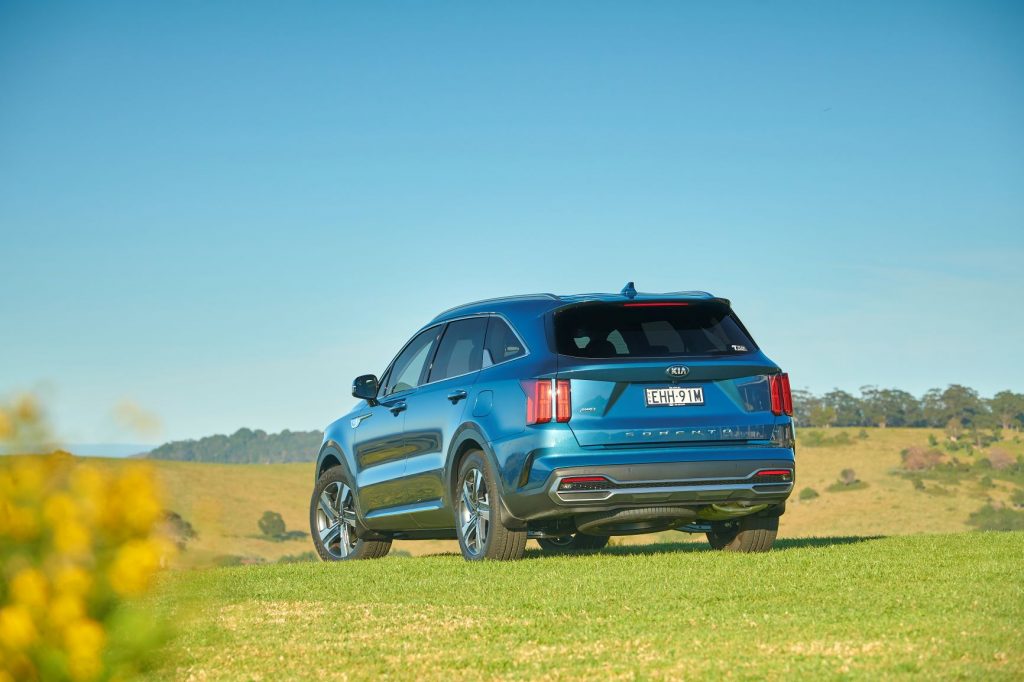
[review]
The booming Korean brand Kia’s Sorento large SUV and its very different Stinger sports sedan sibling share duties of championing the company’s growing global reputation as a designer and builder of high-quality vehicles that owners are proud to have in their garages.
The previous-generation Sorento arrived in Australian dealer showrooms back in 2015 and since then its sales and reputation have grown significantly.
The Sorento, the Stinger and the other models in the family including the Picanto, the Cerato and the Seltos have combined to propel Kia into the top five brands on the Australian market – ahead of the likes of Ford, Nissan, Subaru and VW.
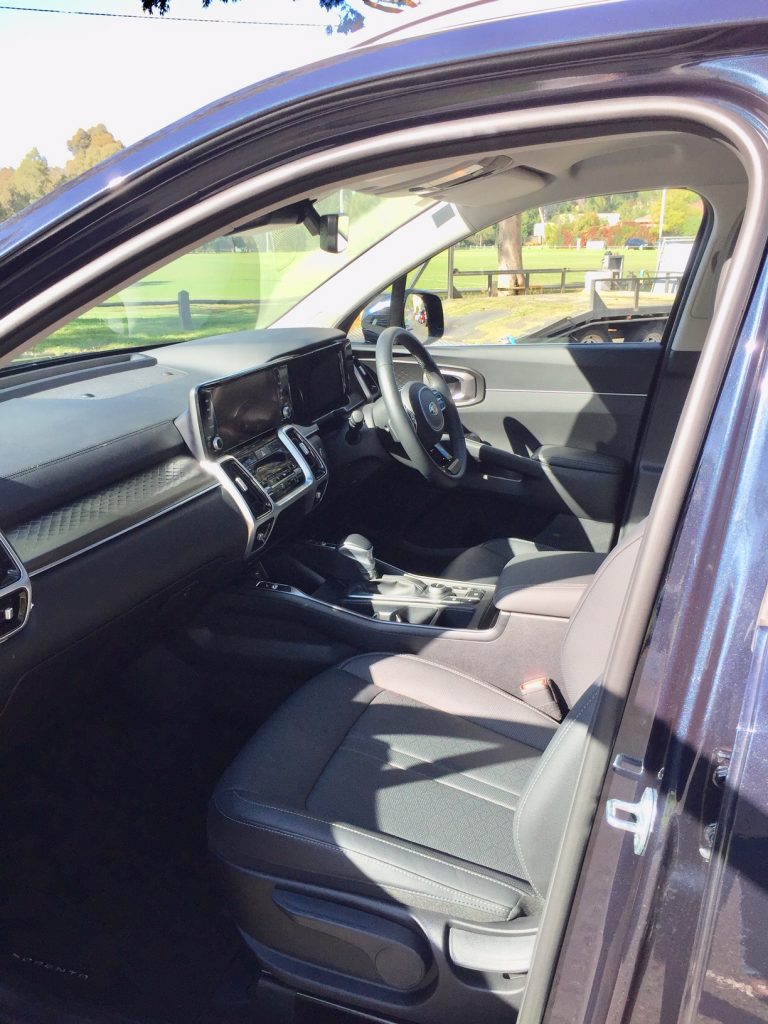
Comfortable, practical and safe
On release, the Sorento was widely acclaimed as a comfortable, practical and safe family chariot and because of this – and after driving it at the Australian media launch – I put our youngest daughter and family into the top-spec Platinum diesel that she still drives (and loves) today.
For this test, the version of choice was the Sport+ AWD diesel that sits second from the top in the model’s pecking order, just below the range-topping, one-with-the-lot GT-Line diesel.
We reckon that the model under test is the pick of the range and the one for which we’d plonk down our hard-earned.
And, what a quantum leap it is from our daughter’s.
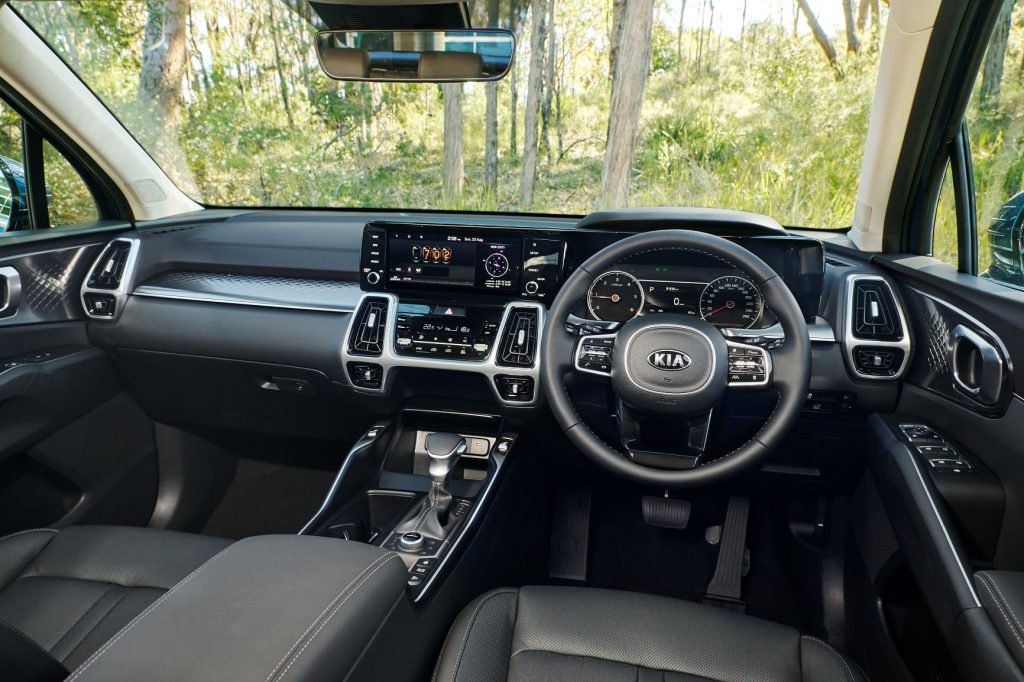
Stylish design, latest technology, superb fit and finish
Styling both inside and out is extremely chic, it comes with the latest safety technology and the fit and finish is right up there with anything from Europe.
The Sorento range covers four guises – S, S Sport, Sport+ and GT-Line.
The Sport+ we’ve just tested comes in at $58,690 drive-away and it goes up against the likes of Mazda’s CX-8 and CX-9, Toyota’s Kluger and its Korean cousin, the Hyundai Santa Fe.
Our tester also came in the handsome Gravity Blue metallic paint that added another $695.
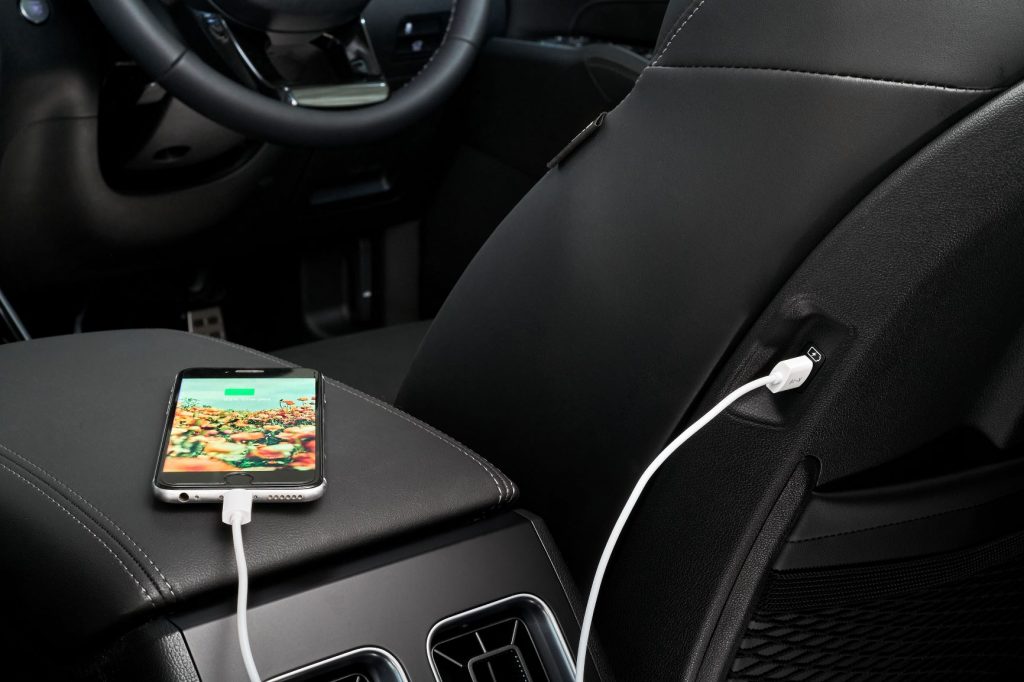
What does it go like?
The Sport+ is powered by Kia’s well-proven 2.2 litre, four-cylinder turbo-diesel that is good for 148kW or peak power at 3800rpm and a handy 440Nm of maximum torque that is on tap from a relaxed 1750rpm to 2750rpm.
Tramp on the accelerator and the big Kia can make it to 100km/h in about 8.5 seconds. Not bad for a seven-seat SUV.
The big Kia rides on a McPherson-strut front-suspension set-up and a multi-link arrangement at the rear.
The car’s excellent stopping power is delivered by 325mm ventilated discs all round.
It’s interesting to note that by dropping steel construction in favour of aluminium for the engine block, Kia engineers have saved 19.5kg of dead weight. Every little bit helps.
While Kia claims a pretty impressive combined fuel-consumption figure of 6.1L/100km, we saw 6.9L/100km during our week of testing on a combination of city and suburban streets, freeways and country roads of both the neglected bitumen and gravel persuasions.
Power is transferred to the wheels via an eight-speed dual-clutch automatic that I found enjoyable to use. Importantly, there is no noticeable turbo lag at take-off.
Out on the freeway the Sport+ is a cruising delight. It loafs along at around 1600rpm with virtually no diesel-engine operating noise transmission seeping into the cabin.
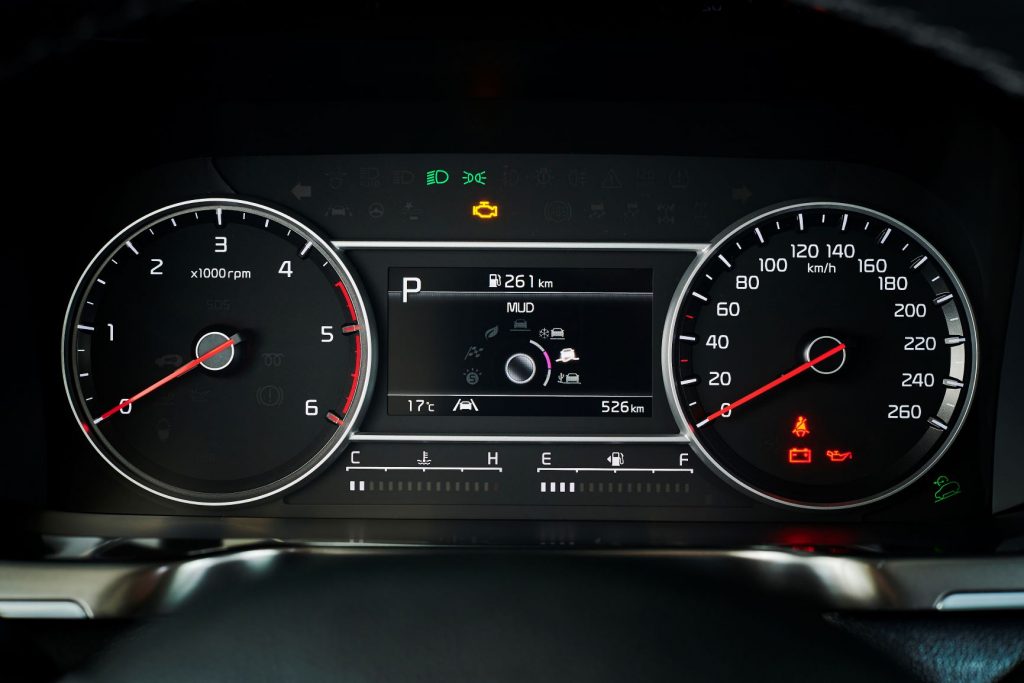
A cabin that punches above its weight
Climb behind the wheel of the big Kia and the instant impression is of a seriously handsome cabin with a dash dominated buy the 10.25-inch infotainment touch screen complete with Apple CarPlay, Android Auto and factory satellite navigation.
Ergonomics are terrific with everything falling easily to hand.
The leather-appointed front seats are well shaped and bolstered and they rate highly in the comfort stakes.
The driver’s pew has 10-way power adjustment as well as electric lumbar support. All of that, combined with height-and-reach adjustment for the multi-function, leather-wrapped, heated steering wheel means it’s a cinch to dial in the perfect driving position.
Other standard goodies include dual-zone climate control, keyless entry and start, a powered tailgate, and plenty of USB ports for all passengers. In fact, there are nine of them.
The Sport+ rides on handsome 19-inch alloys and sensibly, for Australia, Kia has endowed the car with a full-sized alloy spare – the same 235/55 R19 Continental boots with which the other four are shod.
Five-star safety rating
The new Kia comes with an impressive inventory of standard safety kit and this includes blind-spot monitoring, rear cross-traffic monitoring, multi-collision and autonomous emergency braking and LED lights front and rear.
The car’s autonomous emergency braking system comes with pedestrian, cyclist and junction-detection functions.
There is also lane-keeping assist with lane-change assist, an automatic high-beam system, driver-attention monitoring.
To deliver a measure of semi-autonomous highway driving, the Sport+ comes with clever adaptive cruise control with lane-follow assist.
While there are air bags aplenty; there should be one more – a curtain bag for the third row of seats.
Mazda’s CX-9 and the Toyota Kluger both have them so take note, Mr. Kia.
That said, there are dual front, front-side and side-curtain bags for the first two rows and a first-in-class front-centre inflator and impact-sensing automatic door locking.
Topping off the Sorento’s safety credentials is a five-star ANCAP rating.
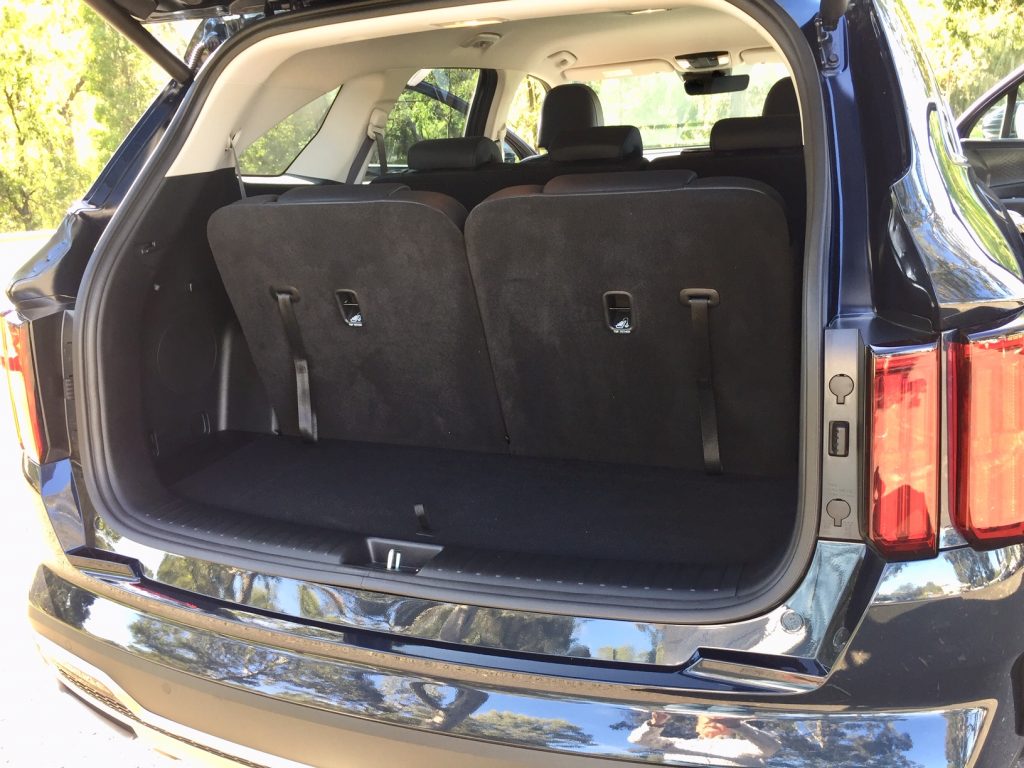
Stretch-out space
One of the main reasons so many Australians have caught the SUV bug is their practical spaciousness.
In the case of the Sorento, fold the second- and third-row seats away and you open up a pretty cavernous 2011 litres of luggage space, use the second-row seats and this drops to a still-handy 616 litres.
Put the smallest two children in the third-row seats and this drops to just 187 litres – but that’s what happens with all seven-seaters.
Speaking of storage, there’s plenty of room for phones and wallets and the like below the dash, big door pockets, two transmission-tunnel-mounted cup holders and a nice deep bin under the centre armrest.
Second-row punters are not forgotten either. There are in-door cup holders and two more in the fold-down centre armrest. Even the third-row passengers have a bit of storage space that could house a small bottle or a phone and they even get to enjoy their own fan controls. A real bonus.
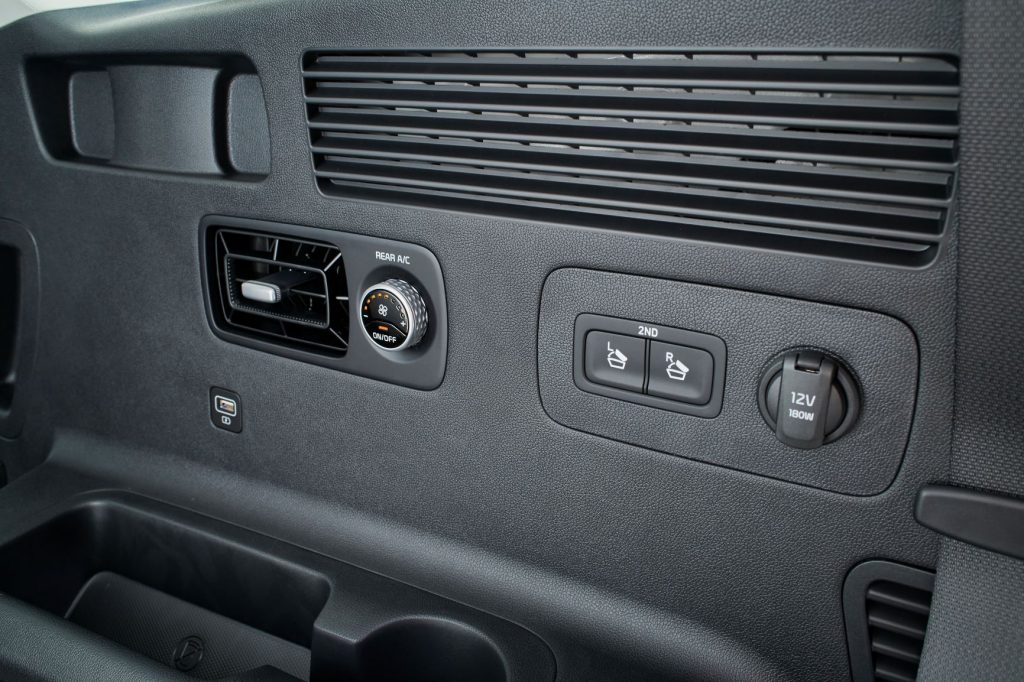
Plenty to like
To sum up the things we like, first of all there’s that great seven-year warranty, there’s
classy styling inside and out, the fit and finish is excellent, there’s a spacious, flexible interior
and air-conditioning fan and vents for the kids in the third-row is a real bonus.
There’s not much in the “don’t-like” department but no full third-row airbag is not good and neither is the fact that the easier access to the third row should be on the kerb side, not the driver’s side.
Complementing the Kia’s seven-year unlimited warranty, roadside assistance is available for the first 12 months and the car’s service intervals are 12 months or 15,000kms, whichever arrives first and a pre-purchase, capped-price service program is available.
The cheapest service is the first one at $335.00 and at $729.00, the four-year or 60,000 km service is the dearest.
Kia Australia was a pioneer among foreign brands in conducting extensive suspension and handling testing in Australia – something for which the company should be commended.
With the new Sorento, this has noticeably paid off. The big car sits remarkable flat and composed even during enthusiastic cornering and the steering is nicely weighted and precise.
As Kia sales go from strength to strength here and around the world, there is no doubt that the new Sorento will continue to hold the flag high, as confirmed by the car-of-the-year awards it has already won here and overseas.
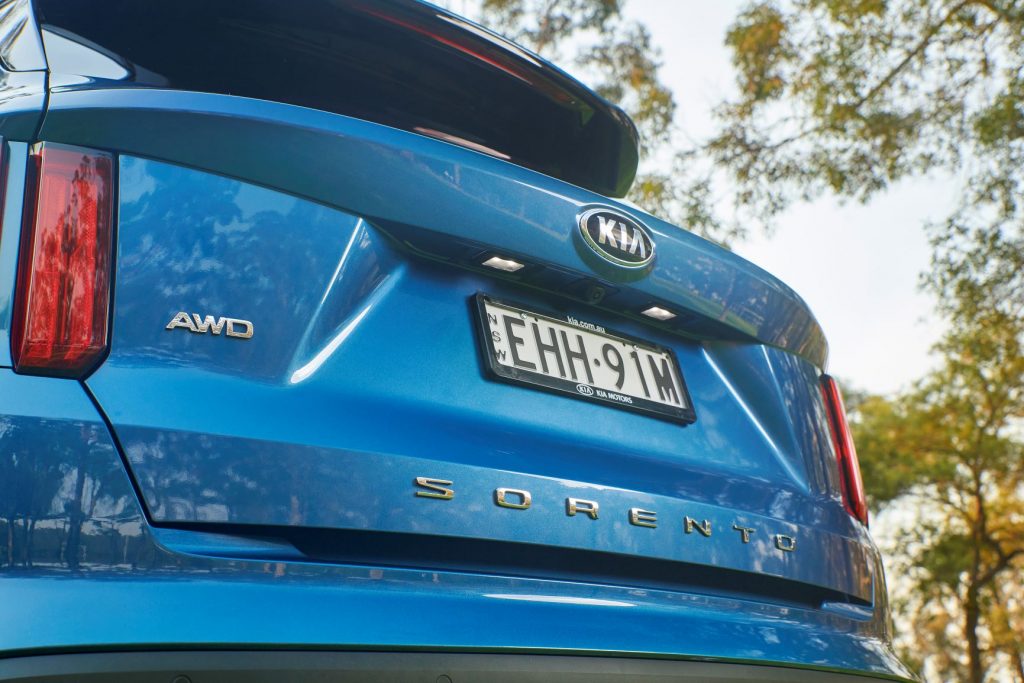 Summary
Summary
I’ve always been a fan of Mazda’s SUV’s interior styling and quality finishes and there is no doubt that with the Sorento, Kia has matched it to the point that it is not unreasonable to compare it with the fancy and expensive German brands.
